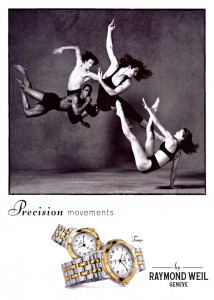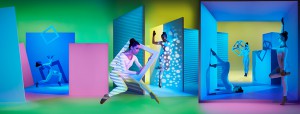The ad for Raymond Weil uses high contrast and a central focus of subject matter which in my eyes could relate to a watch face. Lighting wise it uses a high intensity almost like one of the paintings of the gods in the air godlike, glowing, shimmering possibly a reference to materials of the product. Its set in black and white and uses the dancers as elements interacting with each other to create a perfect moment much like a watch. I believe they chose the black and white to show that they are a company that has been around for quite sometime and have perfected their craft with precision instruments in reference to the dancers. They use the models as a metaphor or even to symbolize the company itself its a representation of what they are and how they got there.
The ad for Pantone has a low contrast image and multiple models not just focusing on one part. There is a smoothness to the color its not so black or white but a lot of in betweens. This add uses the composition, lighting, and models to symbolize that their product is and interaction with color and the space it fills. It has multiple uses and shouldn’t just be focused on on thing because you can do so much with their range and variety of color. Some thing fun, experimental, and up to your imagination. So they chose to represent there identity on the use of their product promoting that its and experience and an interaction of color that has any shapes and forms that is limited to your creativity.





